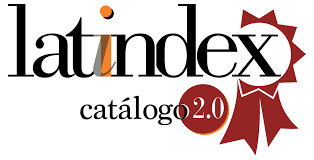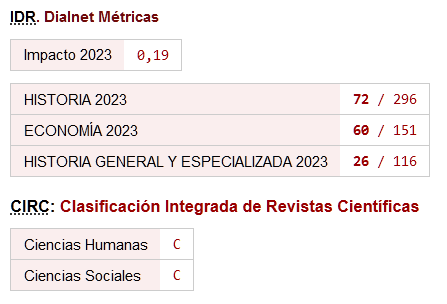The consolidation of an original practice
the distribution of the refitor`s surplus between the prebendaries of Toledo Catedral (XVI century)
DOI:
https://doi.org/10.26784/issn.1886-1881.v10i18.70Keywords:
Cathedral, Chapter, Refitor, Charge and discharge, Remuneration system, SurplusAbstract
As provided for by internal standard, each year in the cathedral chapter of Toledo was distributed among the prebendaries the excess cash generated in the refitor. The refitor was the office that managed the most important collection of income of the Corporation. In the latter case it was common that the surplus was distributed between the foundation and the professors.
The distribution of the surplus between the prebendaries is a new research topic. The interest is justified initially by the curiosity about this economic behavior, so close to modern payment systems used in the companies. Also, it shows the concern of the chapter cathedral to preserve the economic interests of its members. In this regard, literature production is scarce. There are only certain references in studies of different content, dealing with issues relating to the internal standard, constitutions or charters of these corporations.
The work presented here examines the origin of the refitor surplus of the cathedral of Toledo, the distribution conditions, its object and its evolution during the sixteeth century. From their analysis we conclude that the increase of income of this department was not employed to increase spending, as usual, but to consolidate excess cash for distribution among the prebendaries, in order to increase assistance to the choir, following the doctrine of the Council of Trento. Thus, we will conclude that the surplus rewarded the productivity of existing staff, avoiding destine resources in the creation of new jobs.
Downloads
References
Alonso de Herrera, G. (1528): Libro de agricultura que es de labrança y criança de muchas otras particularidades y puechos de las cosas del campo, Imprenta real.
Amasuno Sarraga, M.V. (1990): La Escuela de Medicina del Estudio Salmantino (siglos XIII-XV), Universidad de Salamanca. André, M. (1847): Diccionario de Derecho Canónico, T.2, Ed. José G. de la Peña, Madrid, pp.193- 194.
Barrios García, A. (1973): La Catedral de Ávila en la Edad Media: estructura socio-jurídica y económica: hipótesis y problemas, Caja de Ahorros y Préstamos de Ávila.
Beltrán de Heredia, V. (1967): Bulario de la Universidad de Salamanca (1219-1549), T.1, Universidad de Salamanca.
Elliott, J.H. (2006): La España imperial, Biblioteca Historia de España, Madrid.
Fernández Álvarez, M. (1991): Fray Luis de León: la poda floreciente (1591-1991), Ed. EspasaCalpe, Madrid.
Fernández Collado, A. (2007): Historia de la Iglesia en España. Edad Moderna, Instituto Teológico San Ildefonso, Toledo. Fourth Lateran Council: 1215 en www.documentcatholicaomnia.eu [Consulta: 29 de marzo de 2013].
González Ferrando, J.Mª. (1956): "Gaspar de Texada, precursor de la Teneduría de libros en España", Técnica Económica, n.2: 36-43.
González, D. y Drelichman, M. (2012): What price a roof? Housing and the cost of living in 16thcentury Toledo" en www. Cifar.ca/…Price-a-roof/…/cifar-iog-2012-W.
Latorre Ciria, J.M. (1992): Economía y Religión. Catedral de Huesca. Rentas y Distribución Social (Siglos XVI-XVII), Institución Fernando el Católico, Zaragoza-Huesca.
Lightbody, M. (2000): "Storing and shielding: financial management behavior in a church organization", Accounting, Auditing and Accountability Journal, v. 13, n. 2: 156-174. https://doi.org/10.1108/09513570010323245
Lop Otín, Mª.J. (2003): El Cabildo Catedralicio de Toledo en el siglo XV: Aspectos Institucionales y Sociológicos, Fundación Ramón Areces, Madrid.
López Arévalo, J.R. (1966): Un cabildo catedral de la Vieja Castilla. Ávila: su estructura jurídica, s. XIII-XX, Instituto Alonso Madrigal. Consejo Superior de Investigaciones Científicas.
Lorente Toledo, L. (1993): "Origen, desarrollo, rentas y patrimonio de la Universidad de Toledo (1520-1845), Anales Toledanos, v.30: 59-69.
Martínez Gil, F. (2000): Muerte y sociedad en la España de los Austrias, Universidad de CastillaLa Mancha, Cuenca.
Menegus Bornemann, M. y González y González, E. (1995): Historia de las Universidades modernas de Hispanoamérica: métodos y fuentes, Universidad Nacional Autónoma de México.
Pérez Puente, L. (2005): Tiempos de crisis, tiempos de consolidación: la catedral metropolitana de la ciudad de México, 1653-1680, Universidad Nacional Autónoma de México.
Portillo Capilla, T. (1993): "Vida administrativa en las catedrales en los siglos XII al XVI", Memoria Ecclesiae, n. 4: 85-99.
Quintana de Andrés, P.C. (2006): Los estatutos del Cabildo Catedral de Canarias en la Edad Moderna, Ed. Idea, Las Palmas de Gran Canaria.
Ramos Ahijado, S. (2011): La catedral de Ávila como institución musical durante la segunda mitad del siglo XVII, Universidad de Salamanca.
Tejada y Ramiro, J. (1863): Colección de cánones y de todos los Concilios de la Iglesia de España y de América, T.5, Imprenta de don Pedro Montero, Madrid.
Villaluenga de Gracia, S. (2009): "La remuneración y el control del servicio cultual en la Catedral de Toledo (siglo XVI)", Pecvnia: Revista de la Facultad de Ciencias Económicas y Empresariales de la Universidad de León, n.8: 325-370. https://doi.org/10.18002/pec.v0i8.685
Downloads
Published
How to Cite
Issue
Section
License

This work is licensed under a Creative Commons Attribution-NonCommercial-ShareAlike 4.0 International License.










